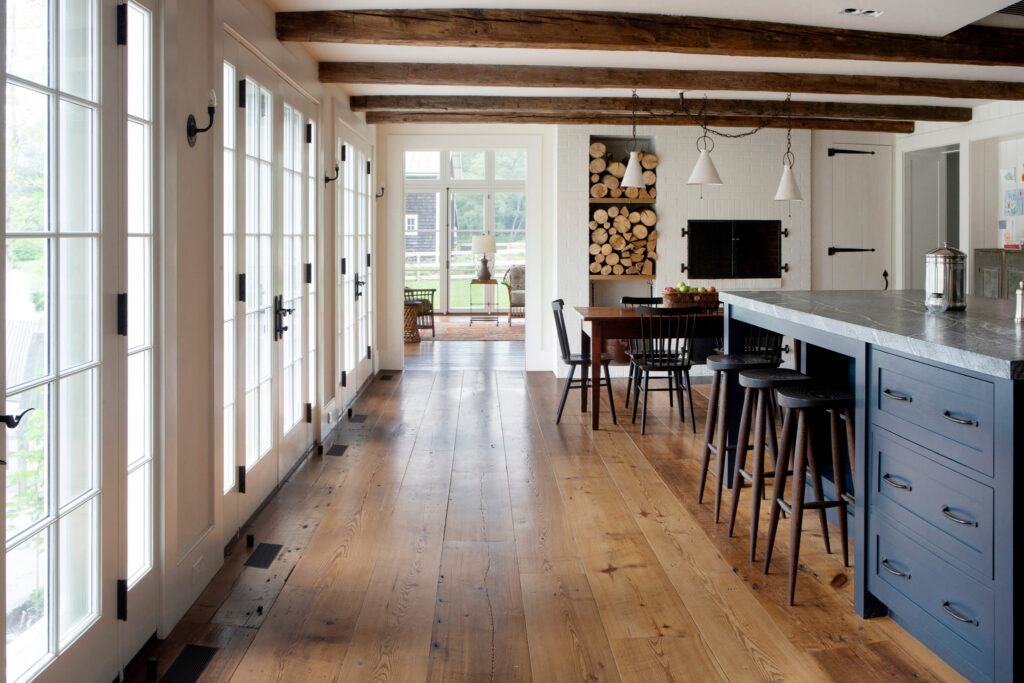Hardwood floors add warmth, elegance, and timeless appeal to any home. However, they are susceptible to water damage, which can compromise their beauty and structural integrity. Water damage can occur due to various reasons, such as leaks, spills, floods, or excessive humidity. While water damage to hardwood floors can be distressing, the good news is that in many cases, they can be repaired and restored to their former glory. This article will guide you through the process of repairing water-damaged hardwood floors, addressing common questions and offering insights into effective solutions.
Can Water Damaged Hardwood Floors be Fixed?
The first question that arises when facing water-damaged hardwood floors is whether they can be fixed at all. The answer is generally yes, but it depends on the extent of the damage and how promptly you take action. Swift action is crucial to preventing further damage, as prolonged exposure to moisture can lead to warping, cupping, or even mold growth.
What to Do if Water Gets Under Hardwood Floors
Water can find its way underneath hardwood floors through various means, such as leaks or flooding. When this happens, it’s essential to address the issue promptly:
- Assess the Situation: Identify the source of the water and stop it if possible. This might involve fixing a leak or drying up standing water.
- Remove Excess Moisture: Use towels, mops, or wet vacuums to remove as much water as possible from the affected area.
- Allow for Ventilation: Open windows and doors to improve ventilation and aid in drying out the space. Using fans and dehumidifiers can accelerate the drying process.
- Check Subflooring: If water has seeped through, check the subflooring for dampness as well. Address any moisture issues to prevent long-term damage.
- Professional Assistance: If the damage is extensive or you’re unsure about the steps to take, consider seeking professional assistance and get a free restoration quotation. Flooring experts can assess the damage and recommend appropriate solutions.
Should You Refinish or Replace Water Damaged Hardwood Floors?
The decision to refinish or replace water-damaged hardwood floors depends on the severity of the damage:
- Refinishing: If the water damage is minimal, such as surface discoloration or light cupping, refinishing might be sufficient. Refinishing involves sanding down the damaged layers and applying new finish to restore the floor’s appearance.
- Replacement: In more severe cases where the hardwood planks are extensively warped, buckled, or showing signs of mold, replacement might be necessary. This involves removing the damaged boards and installing new ones. Replacement is also recommended if the subfloor has been compromised.
- Professional Opinion: To make an informed decision, consult with a professional flooring contractor. They can evaluate the extent of the damage and provide recommendations based on their expertise.

Can Mold Grow Under Hardwood Floors?
Mold growth is a significant concern when dealing with water-damaged hardwood floors. Mold thrives in damp, dark environments and can pose health risks to occupants. If water has penetrated beneath the hardwood, mold can grow on the subfloor and the back of the hardwood planks. Signs of mold include a musty odor, discoloration, and visible mold patches.
Address mold growth by:
- Ensuring Proper Drying: Thoroughly dry the affected area to discourage mold growth. Use dehumidifiers and fans to speed up the process.
- Consulting Professionals: If you suspect mold growth, it’s wise to consult mold remediation professionals. They can assess the situation, conduct mold testing, and safely remove any mold present.
Can Your Hardwood Floors be Saved?
Whether your hardwood floors can be saved depends on how quickly and effectively you respond to the water damage. Rapid action can prevent irreversible harm. Here’s what you can do:
- Quick Response: Act promptly when you notice water damage. The sooner you address the issue, the better your chances of saving the floors.
- Assessment: Determine the extent of the damage. If it’s limited to the surface and hasn’t reached the subfloor, refinishing might be sufficient.
- Professional Help: If the damage is extensive or if you’re unsure about the best course of action, seek professional assistance. Experienced flooring contractors can provide guidance tailored to your situation.
- Preventive Measures: Once your floors are repaired, take preventive measures to avoid future water damage. Address leaks and spills promptly, regulate indoor humidity, and use mats in high-risk areas.
Conclusion
Water damage to hardwood floors is a common issue that many homeowners face. While it can be distressing, timely action and appropriate measures can often save your cherished hardwood floors. From assessing the damage to deciding between refinishing and replacement, each step is crucial to the restoration process. Remember, professional assistance is always available to guide you through this journey, ensuring that your hardwood floors are repaired effectively and restored to their former glory. By acting swiftly and seeking expert advice, you can enjoy the beauty and durability of your hardwood floors for years to come.






